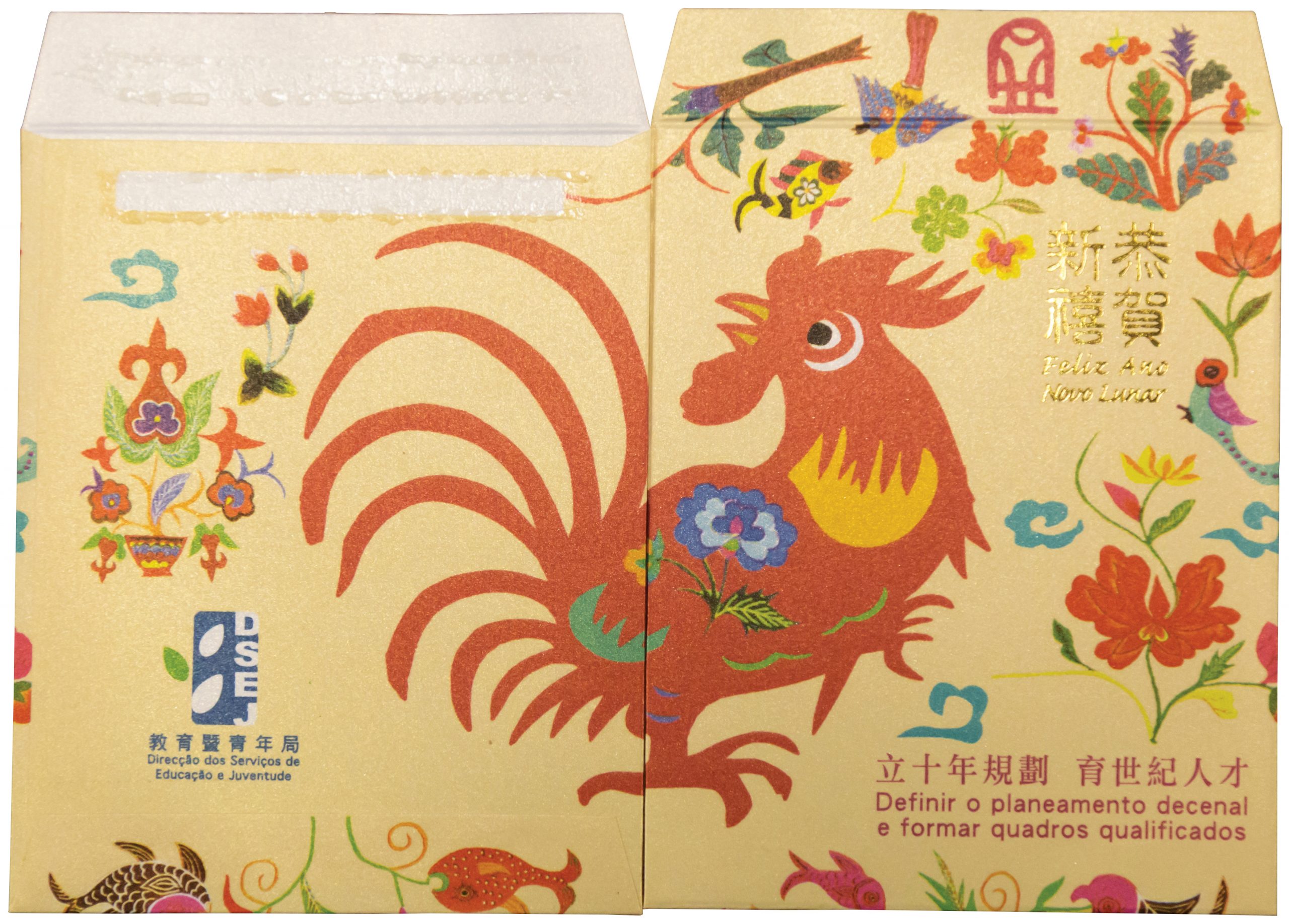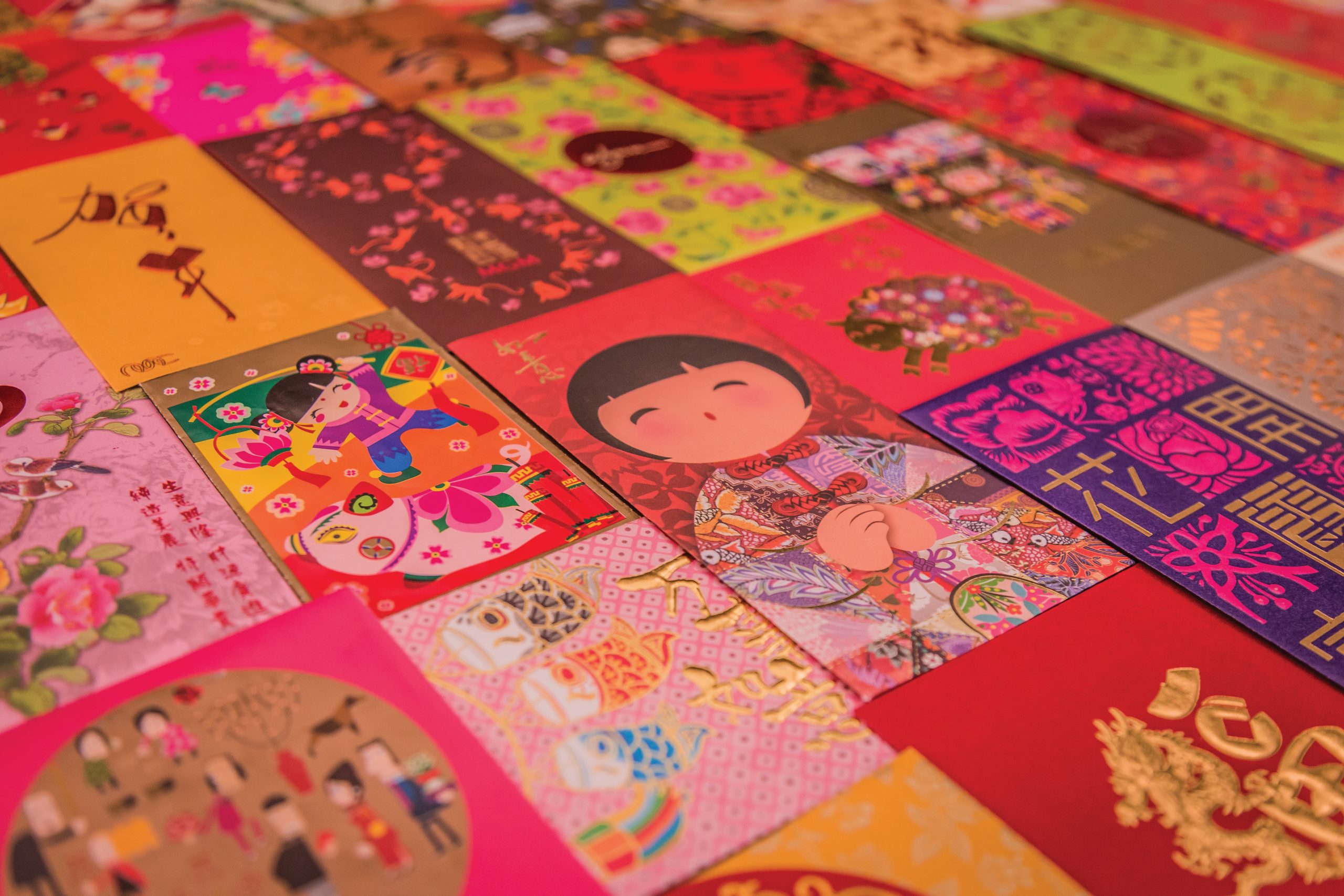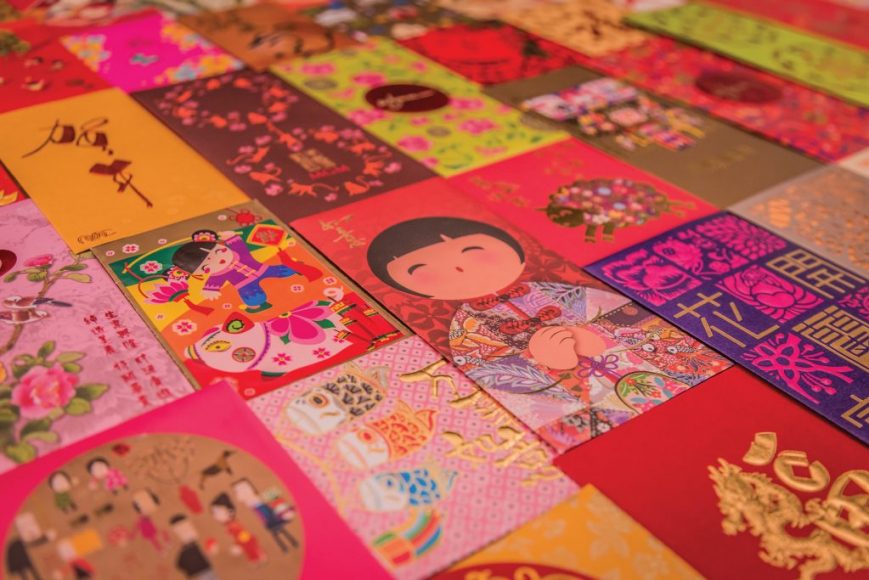Red envelopes come in all sizes and colours during the Lunar New Year
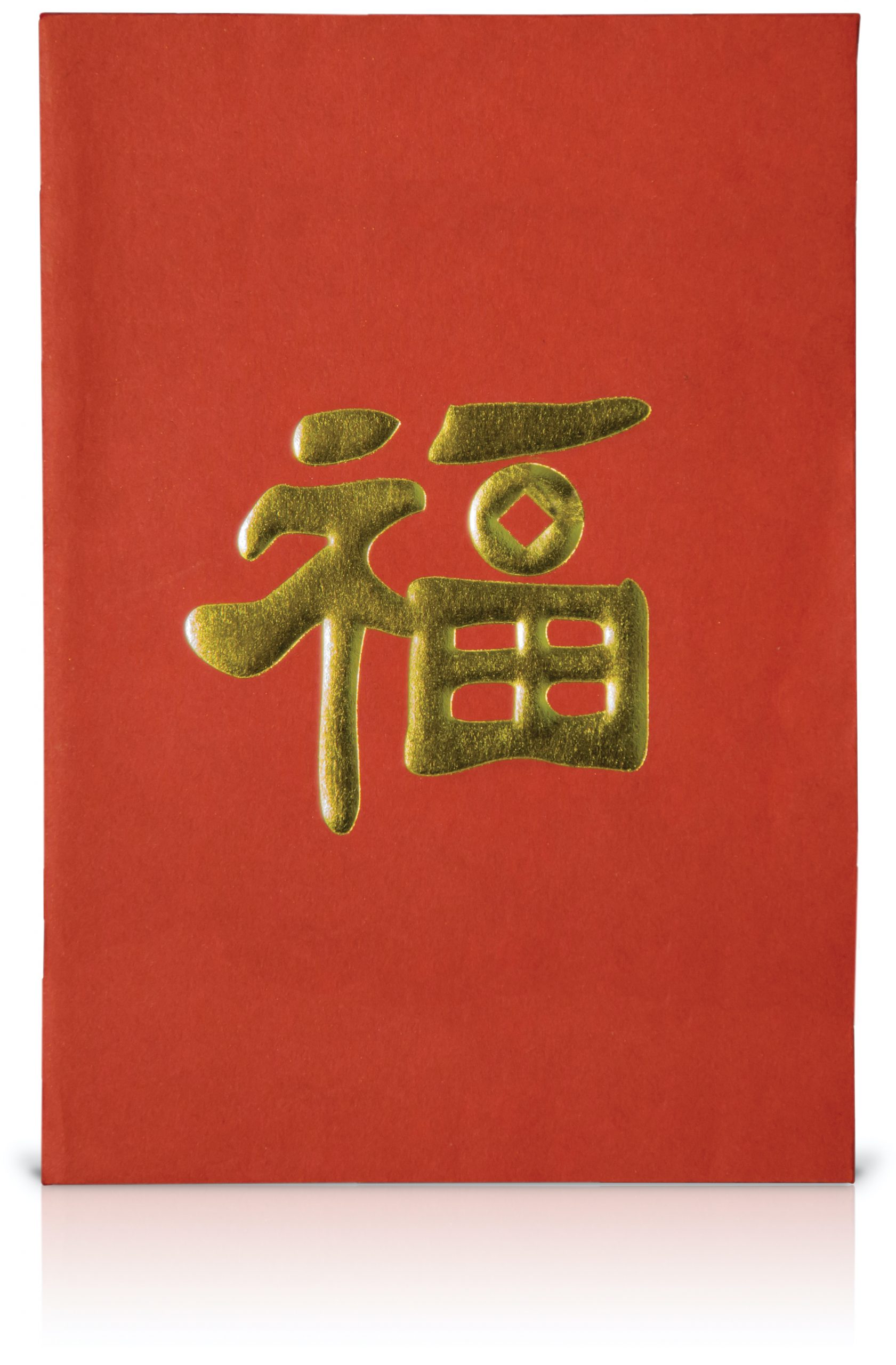
With the arrival of the Lunar New Year comes one of China’s oldest customs: the giving of red envelopes to relatives, friends and employees. Known in Mandarin as ‘hong bao’ (red envelopes) and in Cantonese as ‘lai see’ (being useful), the little red packets represent a gesture of thanks, friendship and recognition – a momentary expression of gratitude and connection in the midst of our busy lives.
Red envelopes are an important part of the Lunar New Year, a festival full of meaning. It is a time to reunite with family and friends. It is a time to give thanks for the blessings of the previous year and celebrate achievements and successes: a birth, a graduation, a promotion or a marriage, to name a few. It is a time to leave behind problems and mistakes and start anew.
One of the historical roots of the custom involves the clearing of debts before starting the new year. Debt collectors were always busiest on the last day of the old year, pacing the streets, pursuing customers to pay up before midnight. Extra cash was most welcome in ridding oneself of such unwanted visitors.
The tradition of red envelopes is widespread throughout the Chinese world, including the diaspora. It has also spread to countries in Southeast Asia, including Vietnam, Cambodia, Myanmar and the Philippines.
Standard gift amounts range widely, from MOP20–50 dollars for young children as well as service staff at frequented restaurants, shops and service providers to thousands bestowed by a business tycoon to an important client or business partner. Packets for work colleagues and close unmarried friends range from MOP50–300. Giving to those who are yet unmarried reflects the traditional belief that being single is unfortunate and being married is a blessing. The envelopes themselves range even more widely, from hundreds, if not thousands, of designs – each conveying a different meaning.
Many Chinese believe that giving red packets is better than the Western custom of Christmas presents. In recent years, Christmas has been hijacked by multinational companies and department stores vying for their biggest sales revenues of the year. People spend heavily and struggle to find appropriate gifts; many items are never used or regifted to someone else. While gifting money is considered vulgar and inelegant in Western culture, the Chinese view giving money as simple and practical: the recipient knows best how to use it.
Many Chinese believe that giving red packets is better than the Western custom of Christmas presents
“Lai see packets have no time or seasonal limits and are therefore great for any occasion. – they are also environmentally friendly,” says Eugene Kong, who designs packets at Macau Creations, a local creativity company.
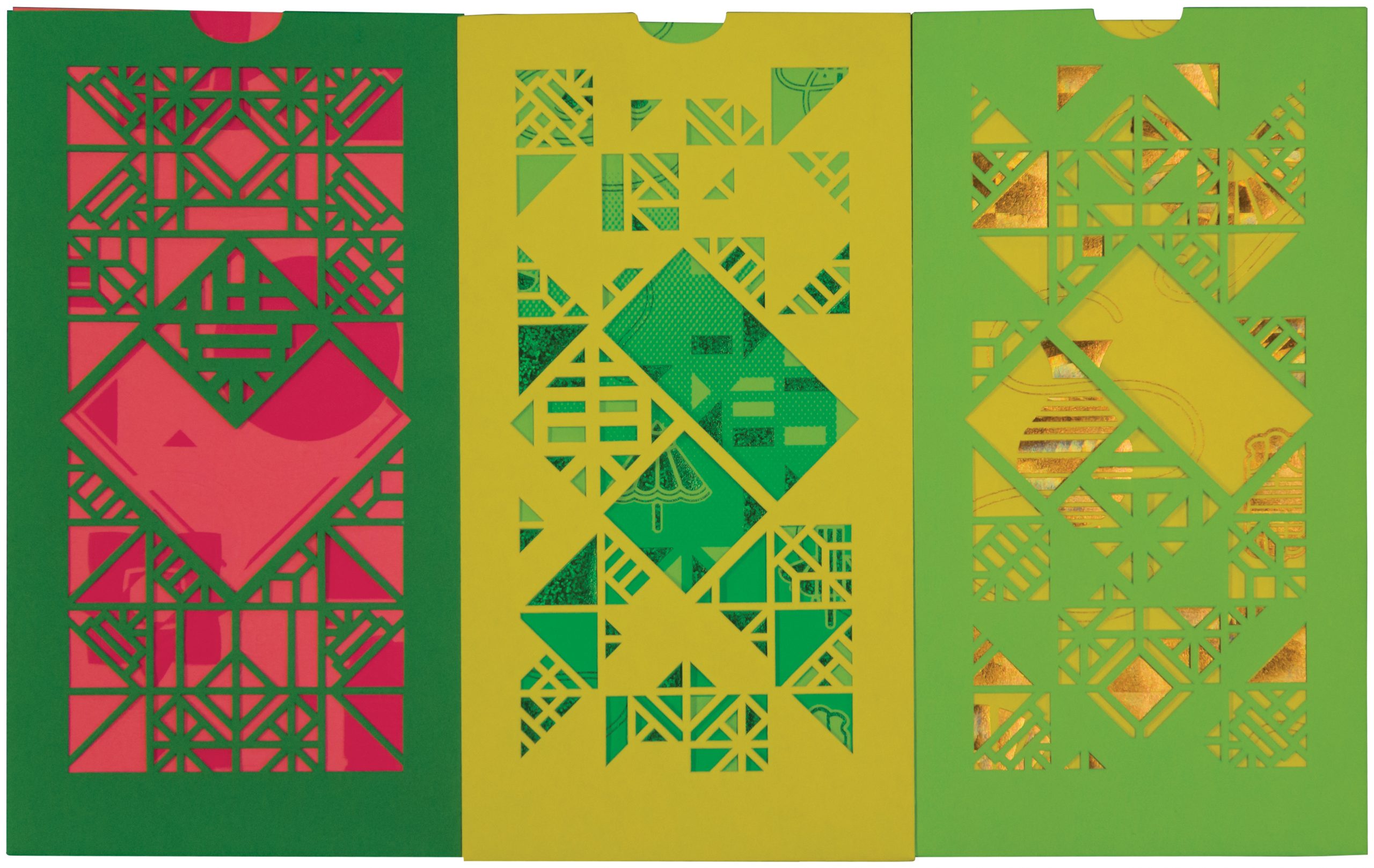
Red packets evolved from a symbol of longevity to social goodwill
Many explanations exist regarding the origins of the custom. The most widely accepted explanation dates back to the Qin Dynasty (221–206 BC): the elderly would thread coins with a red string, called ‘ya sui qian,’ meaning ‘to ward off old age.’ These coins were then given to others to protect them from sickness, old age and death.
After Chinese monks invented block printing in the 9th century AD, the coins were replaced by red envelopes. In Chinese culture, red is the most auspicious colour; therefore, money must be given in a red envelope. It must never be a white envelope, which is the traditional funeral colour. In South Korea, on the other hand, white envelopes are used.
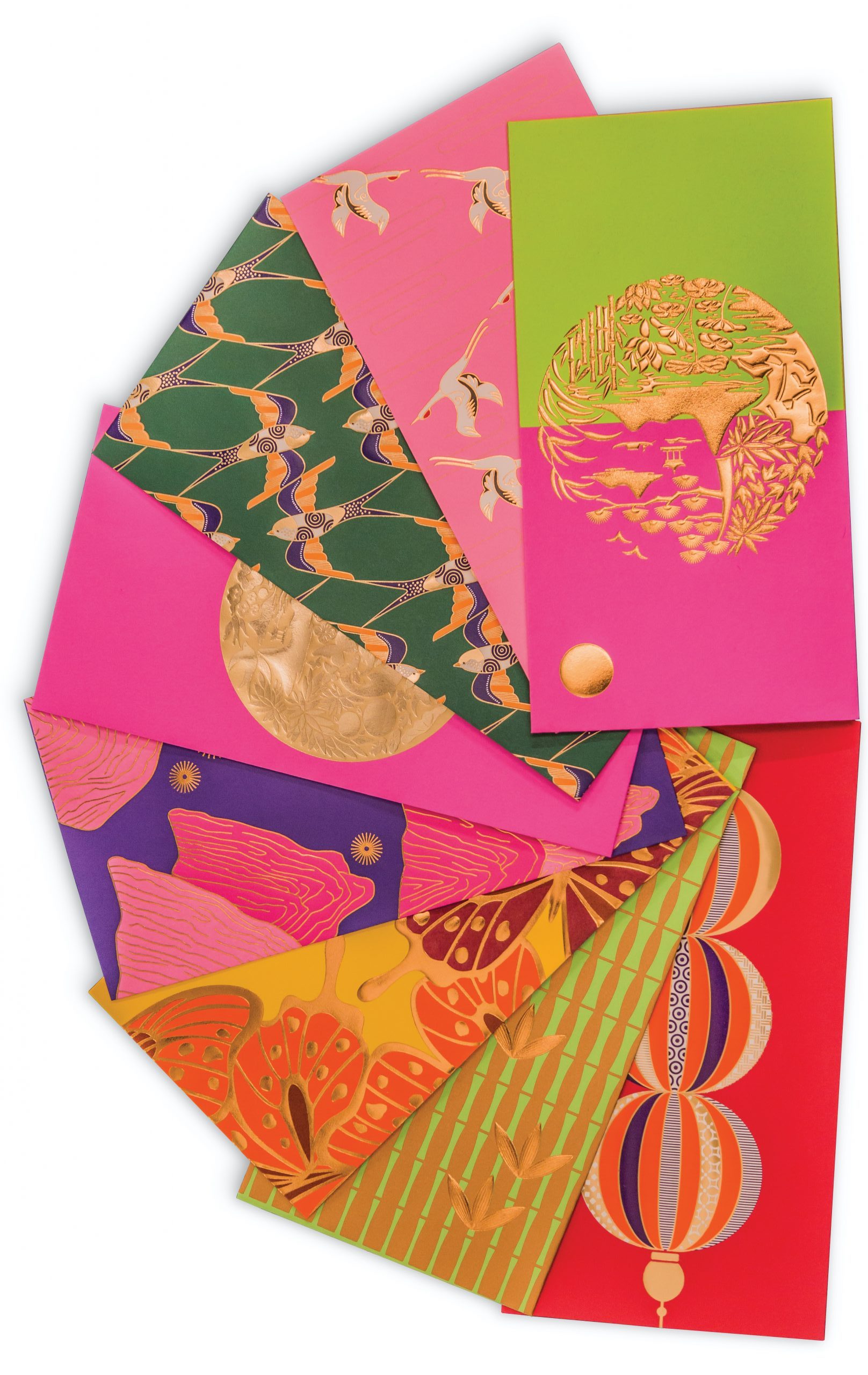
“In Chinese tradition, red and gold are the best colours to use for the packets. Under the influence of Western design, new printing technology, as well as increasing consumerism in Chinese society, red, gold, pink, purple, orange, yellow, are now all common and acceptable envelope colours. The common point is that they signify happiness, good luck, auspiciousness and wealth,” says Kong. “Traditionally, white and dark blue are banned because of their connection with funerals. In my opinion, if the design is creative and trendy, they are also acceptable to young people.”
As the custom of giving packets became an essential part of the Lunar New Year festivities, it represents many meanings. First, is a gift given to a loved one – a child, an unmarried relative or an elderly person. Another is given as recognition by a superior to a subordinate for the last 12 months of dedication, between colleagues or classmates. Red packets are also given to the staff of frequented shops or restaurants, building security guards and cleaners, chauffeurs or taxi drivers. Packets are especially appreciated by those on modest incomes who live on tight budgets. Not only is the additional revenue greatly welcome, so too is the acknowledgement and appreciation of services well-rendered.
Thus, red envelopes have been woven into the fabric binding society together. A dispute or argument is often forgotten with the exchanging of packets, as both donor and recipient can start the new year with a clean slate.
Over the years, the form of giving has become more elaborate. Even numbers are considered auspicious, odd numbers are not so it has become customary to include two notes per envelope. Amounts in multiples of eight and nine are good, as the sound of ‘eight’ rhymes with becoming rich and ‘nine’ with longevity. Multiples of four are banned because it rhymes with death. New envelopes as well as newly printed paper money (not coins), fresh and fragrant, are ideal.


There is no such thing as giving too much but beware of giving too little
Weddings are, of course, one of the happiest events of any social calendar. In the Chinese world, they can cost tens, even hundreds, of thousands of yuan, as families of both the bride and groom want to invite a large number of family and friends and provide the best food and wine. Additionally, the newlyweds must furnish their new home.
Red packets from guests are a vital means to help cover a portion of these substantial expenses.
Many people enjoy the gift of giving so much that they do not wait for Chinese New Year or other special occasions but rather dole out red packets regularly throughout the year to family members, taxi drivers, vendors and kind and helpful strangers. It certainly is an instant way to make a friend and win a smile!
When relatives from abroad visit China, there may be some expectation of exchanging red packets of as much as US$1,000 and sometimes more. This is a way of showing mutual love and affection in a culture that traditionally does not express such sentiments verbally.
The monetary amount in an envelope might seem random but is decided by a number of factors, including the occasion or circumstances of an event as well as the social rank of both donor and recipient. Special events such as a wedding, graduation or going abroad to study require larger amounts – hundreds, even thousands, of dollars. Such events happen only once and are worthy of celebration. The amount is always commensurate with the financial status of the donor and recipient, irrespective of the occasion. Pressure to gift the thickest red packets is greatest for the wealthy who are expected to be generous to everyone, but if they are lucky, they may receive a few thick packets in return!
